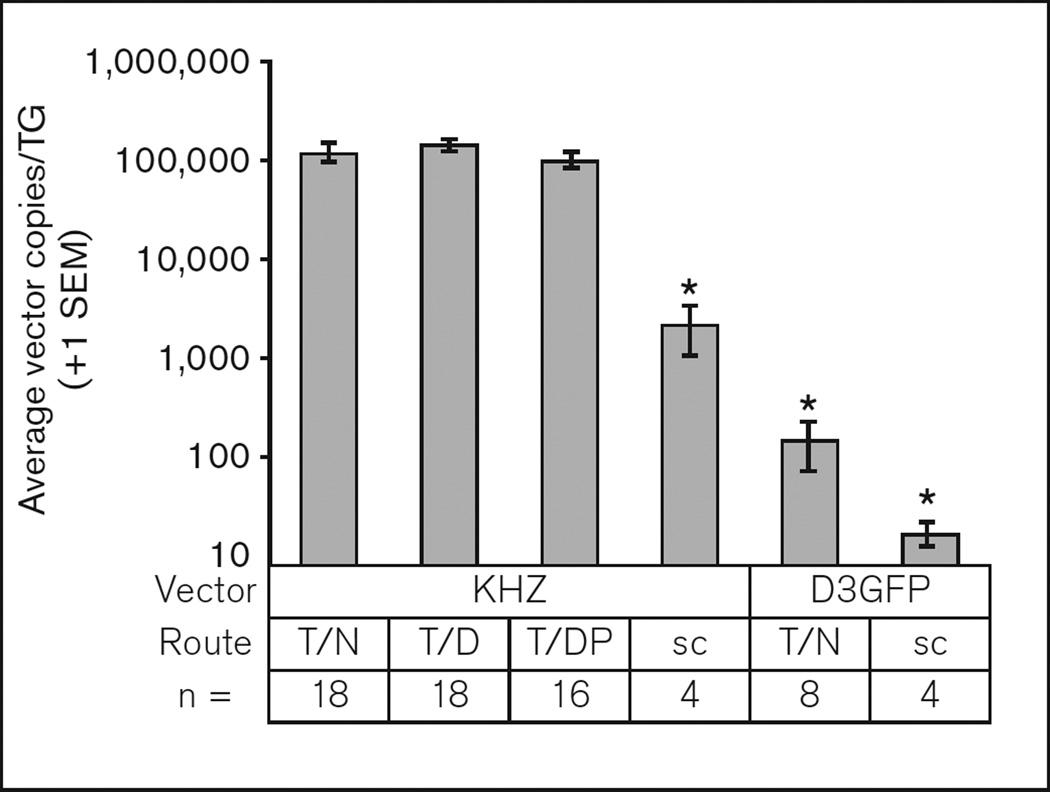Fig 1.
Efficiency of replication “conditional” KHZ and “defective” D3GFP vector delivery to the mouse trigeminal ganglion (TG). Mice were treated with replication-conditional vector KHZ (8.0 × 106 PFU in 10 µL) and replication-defective vector D3GFP (3.0 × 107 PFU in 10 µL) by subcutaneous injection (sc) into the whisker pad or topically following light abrasion of the whisker pad with a needle (T/N), Dremel (T/D), or Dermapen (T/DP). DNA was purified from ipsilateral TGs 3 to 4 days following administration. *P < .05 with respect to the first (left most) bar, ie, KHZ applied topically following light abrasion with the needle.

